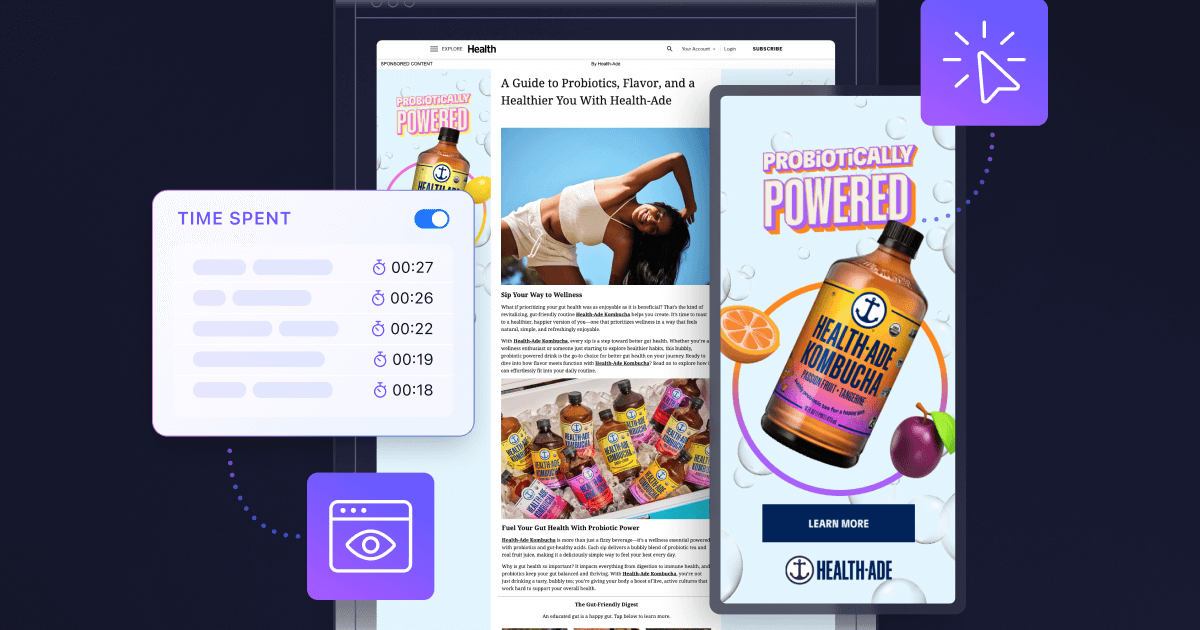What Are The Types Of Native Advertising?
.png)
Understanding Types of Native Advertising
In today's digital age, advertising has evolved from the traditional methods of the past. Marketers are constantly looking for innovative ways to engage their audience and present their messages in a non-intrusive manner. One such method that has gained prominence is native advertising. But what exactly are the "types of native advertising"? This post will shed light on the various types of native advertising and their unique attributes.
What is Native Advertising?
Native advertising is a form of paid media where the ad experience follows the natural form and function of the user experience in which it is placed. Unlike display ads or banner ads that clearly stand out, native ads don't really "look" like ads. They look, feel, and function like organic content. This is what makes them so effective; they blend seamlessly with the platform they're on, making them less disruptive and more engaging for users.
Types of Native Advertising
There are many types of native advertising, each tailored to different platforms and audiences. Here's a breakdown of the most common ones:
In-Feed Ads
These are the most common types of native advertising that one might come aross. As the name suggests, in-feed ads appear within a platform's regular content feed. Think of the sponsored posts you see as you scroll through your Facebook or Instagram feed. These posts are often marked as "sponsored" but otherwise look and feel just like any other post on the platform.
Search & Promoted Listings
Search engines like Google and Bing, as well as e-commerce sites like Amazon and eBay, use this form of native advertising. When users search for a particular term, these platforms display promoted listings or results at the top or side of the organic search results. They're native because they don't look much different from the regular search results, except for a small "ad" or "sponsored" label.
Content Recommendations
You might have come across sections titled "You may also like" or "Recommended for you" at the bottom of an article or blog post. These are content recommendation widgets, and they display articles, stories, or products that might be of interest to the reader.
Branded Content
This type of native advertising involves a collaboration between a brand and a publisher to create content that's beneficial for both. For instance, a tech company might partner with a tech blog to produce a detailed review or feature about one of its products. The content is often labeled as "sponsored" or "in partnership with," but it provides genuine value to the reader.
In-Ad with Native Elements
These ads are regular display ads, but they contain information and elements that are contextually relevant to the platform they're on. For example, an in-ad on a cooking website might display a recipe using a particular product.
Custom and Bespoke
Some platforms create their own custom types of native advertising tailored to their unique audience and format. For instance, Spotify might have branded playlists, while a gaming platform might have in-game brand integrations.
Other Types
Advertisers are continuously innovating in their approach to engaging users. Native advertising can take nearly any digital form, including video, audio, playable games, virtual reality shops, chatbot integrations, email-based, and many more. As long as an advertisement is designed to be subtle, relevant, and non-disruptive while providing value to the user, it can be considered a type of native advertising.
The Importance of Native Advertising
Native advertising has risen to prominence in the marketing world due to its effectiveness. Because these advertising messages are designed to align with the user experience, they're more engaging and less disruptive than traditional forms of advertising. A recent study from the Native Advertising Institute found that native ads create a 10% increase in purchase intent and generate 9% higher brand affinity than banner ads do.
Moreover, with the rise of ad-blockers, traditional banner ads and pop-ups are losing their effectiveness. Native advertising offers a way to reach consumers without being intrusive or annoying.
Final Thoughts on the Types of Native Advertising
Native advertising represents a shift in the way marketers approach their audience. It's about blending in rather than standing out. As consumers become more discerning and skeptical about advertising, native ads offer a way to deliver messages in a more subtle, organic manner.
In an era where consumers have grown tired of traditional advertising and are wary of overt promotions, native advertising ensures that the audience's online experience remains unobtrusive while still conveying the brand's message. As we move forward, the types of native advertising will continue to expand and adapt, offering even more opportunities for brands and consumers to connect in meaningful ways.
See what's possible with Nativo. Fill out the form below to schedule a free demo with one of our dedicated experts.

.jpg)


